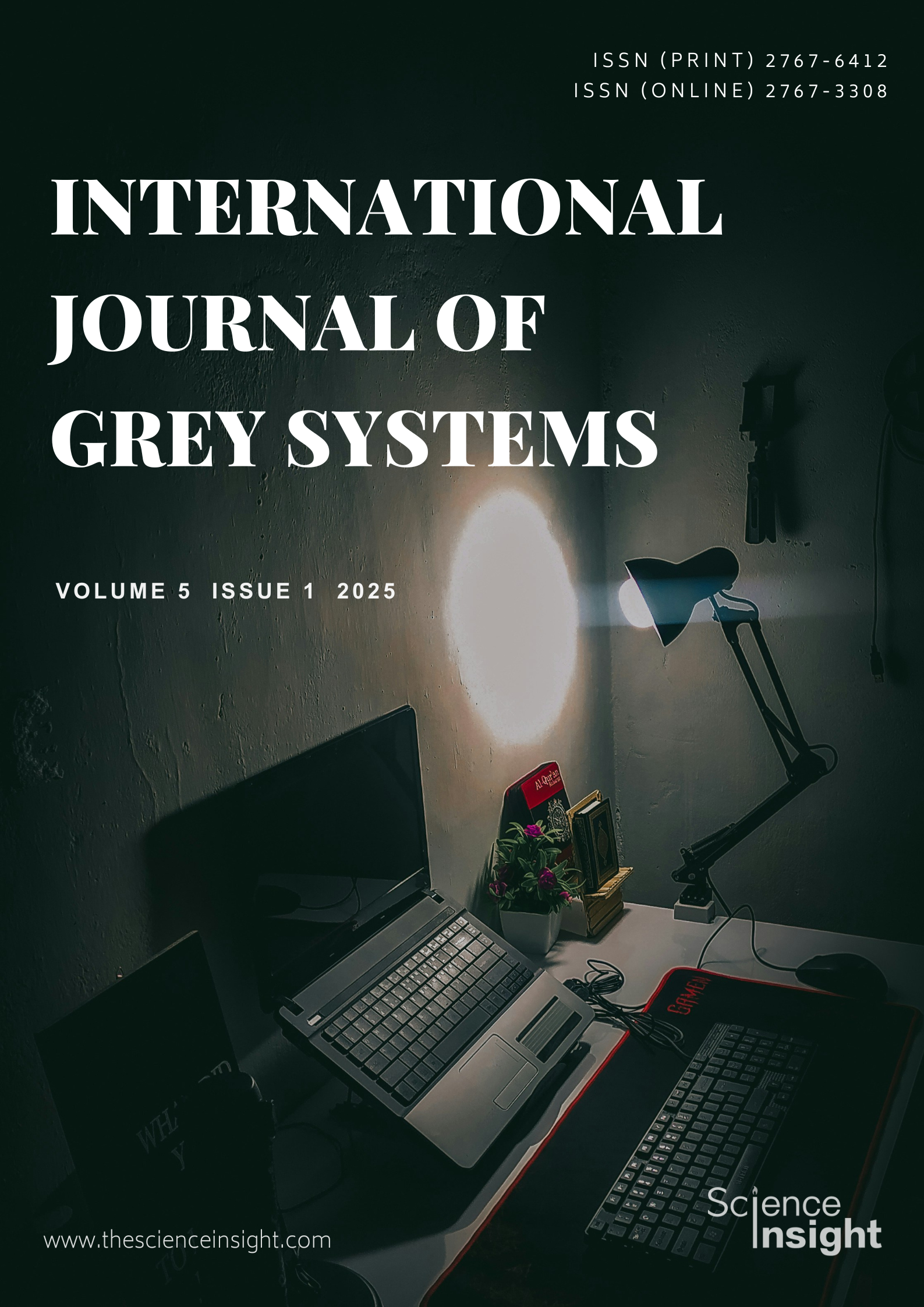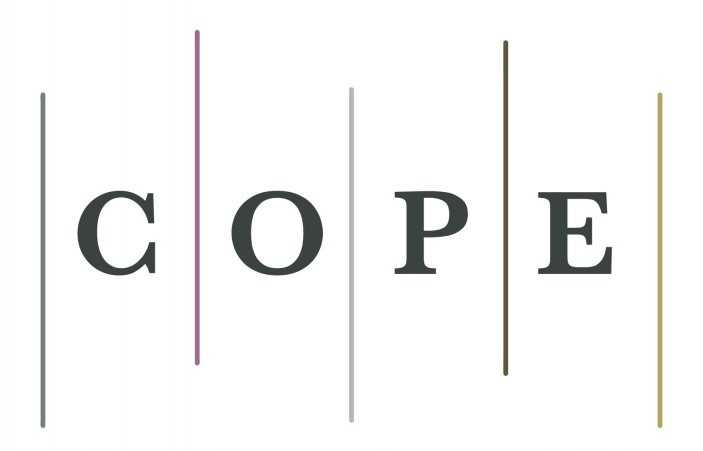Evaluation of Challenges to Modernization of Family Businesses: Grey Relational Analysis
DOI:
https://doi.org/10.52812/ijgs.106Keywords:
Sustainability, modernization, barriers, family business, Grey Relational AnalysisAbstract
Family businesses have contributed to the economic growth of economies globally. Family businesses face unique challenges that affect their efforts to modernize their operations and compete effectively on the global market. This study, therefore, aims at evaluating challenges affecting family business efforts to modernize. Using survey, the study collected primary data and evaluated twelve challenging factors using the Dynamic Grey Relational Analysis model. The findings indicate that there are several challenges affecting the modernization of family business, including resistance to change, rapid advancement of technology, rigid organizational structures, and succession planning. The study provides insight into how family businesses can reconcile traditional features with modern characteristics for sustainability in the long run.
References
Akca, M., & Küçükoglu, M. T. (2019). Relationships between mental workload, burnout, and job performance: A research among academicians. Evaluating Mental Workload for Improved Workplace Performance, (January), 49–68. https://doi.org/10.4018/978-1-7998-1052-0.ch003
Amann, B., & Jaussaud, J. (2011). Family and non‐family business resilience in an economic downturn. Asia Pacific Business Review. 18(2), 203–223. https://doi.org/10.1080/13602381.2010.537057
Amato, S., Basco, R. & Lattanzi, N. (2022). Contextualizing employment outcomes in family business research. Management Review Quarterly, 72, 531–604. https://doi.org/10.1007/s11301-021-00226-x
Araya-Castillo, L., Hernández-Perlines, F., Millán-Toledo, C., & Ibarra Cisneros, M. A. (2021). Bibliometric analysis of studies on family firms. Economic Research-Ekonomska Istraživanja, 35(1), 4778–4800. https://doi.org/10.1080/1331677X.2021.2018003
Arregle, J.-L., Chirico, F., Kano, L., Kundu, S. K., Majocchi, A., & Schulze, W. S. (2021). Family firm internationalization: Past research and an agenda for the future. Journal of International Business Studies, 52, 1159–1198. https://doi.org/10.1057/s41267-021-00425-2
Arregle, J.-L., Michael, A. H., Sirmon, D. G., & Philippe, V. (2007). The development of organisational social capital: Attributes of family firms. Journal of Management Studies, 44(1), 73–95. https://doi.org/10.1111/j.1467-6486.2007.00665.x
Baltazar, J. R., Fernandes, C. I., Ramadani, V., & Hughes, M. (2023). Family business succession and innovation: a systematic literature review. Review of Managerial Science, 17(8), 2897–2920. https://doi.org/10.1007/s11846-022-00607-8
Balzano, M., & Marzi, G. (2024). Osmice at the crossroads: the dialectical interplay of tradition, modernity and cultural identity in family businesses. Journal of Management History (ahead-of-print). https://doi.org/10.1108/JMH-03-2024-0031
Begnini, S., Oro, I. M., Tonial, G., & Dalbosco, I. B. (2024). The relationship between the use of technologies and digitalization strategies for digital transformation in family businesses. Business Management Journal, 14(4), 710–726. http://dx.doi.org/10.1108/JFBM-06-2023-0087
Biel, M., & Ślusarczyk, B. (2022). Family businesses as a form of entrepreneurship. In Family Business and Management. Routledge. https://doi.org/10.4324/9781003200192-1
Block., J., Hansen., C., & Steinmetz., H. (2023). Are Family Firms Doing More Innovation Output With Less Innovation Input? A Replication and Extension. Entrepreneurship Theory and Practice, 47(4), 1496–1520. https://doi.org/10.1177/10422587221084249
Bocatto, E., Gispert, C., & Rialp, J. (2010). Family-Owned Business Succession: The Influence of Pre-performance in the Nomination of Family and Nonfamily Members: Evidence from Spanish Firms. Journal of Small Business Management. https://doi.org/10.1111/j.1540-627X.2010.00306.x
Calabrò, A., Giovanna Campopiano, G., Basco, R., & Pukall, T. (2017). Governance structure and internationalization of family‐controlled firms: The mediating role of international entrepreneurial orientation. European Management Journal, 35(2), 238–248. https://doi.org/10.1016/j.emj.2016.04.007
Chang, E. P. C., Zare, S., & Ramadani, V. (2022). How a larger family business is different from a non-family one? Journal of Business Research, 139, 292–302. https://doi.org/https://doi.org/10.1016/j.jbusres.2021.09.060
Chen, S., Chen, X., Cheng, Q., & Hotton, M. (2008). Conservative financial reporting in family firms. Accounting and Finance, 48(5), 715–735. https://www.academia.edu/21469151
Darbinian, K., Osibo, B. K., Septime, M. M. C., & Meyrem, H. (2023). Investigating the barriers to electric vehicle adoption among older adults using grey relational analysis: a cross-country survey. Management Science and Business Decisions, 3(2), 18-34. https://doi.org/10.52812/msbd.80
de Groote, J. K., Conrad, W., & Hack, A. (2020). How can family businesses survive disruptive industry changes? Insights from the traditional mail order industry. Review of Managerial Science, 15, 2239-2273. https://doi.org/10.1007/s11846-020-00424-x
De Massis, A., & Foss, N. J. (2018). Advancing Family Business Research: The Promise of Microfoundations. Family Business Review, 31(4), 386–396. https://doi.org/10.1177/0894486518803422
Eddleston, K. A., Kellermanns, F. W., & Collier, G. (2019). Research on family firm innovation: what do family firms actually think and do?. Journal of Family Business Strategy, 10(4), 100308. https://doi.org/10.1016/j.jfbs.2019.100308
Eddleston, K., Kellermanns, F. W., & Zellweger, T. M. (2010). Exploring the entrepreneurial behavior of family firms: Does the stewardship perspective explain the difference? Entrepreneurship Theory and Practice, 36(2), 347-367. https://doi.org/10.1111/j.1540-6520.2010.00402.x
Erdogan, I., Rondi, E., & De Massis, A. (2020). Managing the tradition and innovation paradox in family firms: A family imprinting perspective. Entrepreneurship Theory and Practice, 44(1), 20-54. https://doi.org/10.1177/1042258719839712
Ervural, B. (2023, September). Comparative analysis of e-government website performances of European Countries using dynamic grey relational analysis. In International Conference on Electronic Governance with Emerging Technologies (pp. 112-124). Cham: Springer Nature Switzerland. https://doi.org/10.1007/978-3-031-43940-7_10
Ferrari, F. (2025). “All employees are equal… but some are more equal than others”. Role identity and nonfamily member discrimination in family SMEs. Journal of Family Business Management, 15(1), 140-157. https://doi.org/10.1108/JFBM-03-2024-0049
Gjergji, R., Lazzarotti, V., Visconti, F., & García-Marco, T. (2019). Open innovation in family firms: a systematic literature review. Management Research, 17(3), 304-332. https://doi.org/10.1108/MRJIAM-03-2019-0913
Hannadige, Y. S., & Harris, P. (2022). Family Business: The Dominant and Oldest Sustainable Business. In: Harris, P., Bitonti, A., Fleisher, C.S., Binderkrantz, A.S. (eds) The Palgrave Encyclopedia of Interest Groups, Lobbying and Public Affairs . Palgrave Macmillan, Cham. https://doi.org/10.1007/978-3-030-13895-0_233-1
Herrero, I., López, C., & Ruiz-Benítez, R. (2024). So … are family firms more sustainable? On the economic, social and environmental sustainability of family SMEs. Business Strategy and the Environment, 33(5), 4252–4270. https://doi.org/https://doi.org/10.1002/bse.3699
Javed, S. A., & Liu, S. (2019). Bidirectional absolute GRA/GIA model for uncertain systems: application in project management. IEEE Access, 7, 60885-60896. https://doi.org/10.1109/ACCESS.2019.2904632
Javed, S. A., Gunasekaran, A., and Mahmoudi, A. (2022). DGRA: Multi‐sourcing and supplier classification through dynamic grey relational analysis method. Computers & Industrial Engineering, 173, 108674. https://doi.org/10.1016/j.cie.2022.108674
König, A., Kammerlander, N., & Enders, A. (2013). The family innovator's dilemma: How family influence affects the adoption of discontinuous technologies by incumbent firms. Academy of Management Review, 38(3), 418-441. https://doi.org/10.5465/amr.2011.0162
Maharajh, R., Dhliwayo, S., & Chebo, A. K. (2024). The influence of family dynamics on business performance: does effective leadership matter? Journal of Family Business Management, 14(3), 515–533. https://doi.org/10.1108/JFBM-04-2023-0058
Mahmoudi, A., Javed, S. A., Liu, S., & Deng, X. (2020). Distinguishing coefficient driven sensitivity analysis of GRA model for intelligent decisions: application in project management. Technological and Economic Development of Economy, 26(3), 621-641. https://doi.org/10.3846/tede.2020.11890
Mahmud, A., Ding, D., & Hasan, M. (2021). Corporate Social Responsibility: Business Responses to Coronavirus (COVID-19) Pandemic. SAGE Open. https://doi.org/10.1177/2158244020988710
Majchrzak, J., & Więcek-Janka, E. (2019). Application of grey systems theory in the analysis of relationships between family enterprise communication and their market attitude. Informatyka Ekonomiczna, (3 (53), 30-48. https://bibliotekanauki.pl/articles/432203.pdf
Majchrzak, J., & Więcek-Janka, E. (2021, September). TRIZ Contradiction Modelling in Family Business Succession Process Management: Quantitative Approach with an Application of Grey Incidence Analysis. In International TRIZ Future Conference (pp. 276-287). Cham: Springer International Publishing. https://doi.org/10.1007/978-3-030-86614-3_22
Miller, D., Breton‐Miller, I. L., & Scholnick, B. (2008). Stewardship vs. stagnation: An empirical comparison of small family and non‐family businesses. Journal of Management Studies, 45(1), 51–78. https://doi.org/10.1111/j.1467-6486.2007.00718.x
Mokhber, M., Gi, T. G., Rasid, S. Z. A., Vakilbashi, A., Zamil, N. M., & Seng, Y. W. (2017). Succession planning and family business performance in SMEs. Journal of Management Development, 36(3), 330-347. https://doi.org/10.1108/JMD-12-2015-0171
Morris, M., Roy, W., and Jeffrey, A. (1997). Correlates of success in family business transitions. Journal of Business Venturing, 12(5), 385-401. https://doi.org/10.1016/S0883-9026(97)00010-4
Patel, V. K., Pieper, T. M., & Hair Jr., J. F. (2015, October). Opportunities and challenges for family businesses pursuing global markets. In Thriving in a New World Economy: Proceedings of the 2012 World Marketing Congress/Cultural Perspectives in Marketing Conference (pp. 24-29). Cham: Springer International Publishing. https://doi.org/10.1007/978-3-319-24148-7_10
Pauceanu, A. M., Zaharia, R. M., & Benchis, M. P. (2025). The Old, the New, and the Used One—Assessing Legacy in Family Firms. Administrative Sciences, 15(3), 106. https://doi.org/10.3390/admsci15030106
Pongelli, C., Calabrò, A., Quarato, F., Minichilli, A., & Corbetta, G. (2021). Out of the comfort zone! Family leaders’ subsidiary ownership choices and the role of vulnerabilities. Family Business Review, 34(4), 404-424. https://doi.org/10.1177/08944865211050858
Poza, E. J., & Daugherty, M. S. (2010). Family Business. Mason, OH: South-Western Cengage Learning.
Pyromalis, V. D., & Vozikis, G. S. (2009). Mapping the successful succession process in family firms: Evidence from Greece. International Entrepreneurship and Management Journal, 5(4), 439-460. https://doi.org/10.1007/s11365-009-0118-3
Qiu, H., & Freel, M. (2020). Managing family-related conflicts in family businesses: A review and research agenda. Family Business Review, 33(1), 90-113. https://doi.org/10.1177/0894486519893223
Shahzad, F., Akhlaq, A., & Ghaffar, C. (2024). Exploring business succession dynamics in family-owned businesses: lessons from Pakistani case studies. Journal of Family Business Management (ahead of print). https://doi.org/10.1108/JFBM-09-2024-0214
Sharma, P., Chrisman, J. J., & Chua, J. H. (1997). Strategic management of the family business: Past research and future challenges. Family Business Review, 10(1), 1-35. https://doi.org/10.1111/j.1741-6248.1997.00001.x
Siaba, S., & Rivera, B. (2024). The evolution of the field of family business research over a decade (2012–2022). Small Business Economics, 63(3), 1089-1115. https://doi.org/10.1007/s11187-023-00866-z
Stamm, I., & Lubinski, M. (2011). Crossroads of family business research and firm demography: A critical assessment of family business survival rates. Journal of Family Business Strategy, 2(3), 117–127. https://doi.org/10.1016/j.jfbs.2011.07.002
Vallejo, M. C. (2008). Is the culture of family firms really different? A value-based model for its survival through generations. Journal of Business Ethics, 81(2), 261-279. https://doi.org/10.1007/s10551-007-9493-2
van Essen, M., Carney, M., Gedajlovic, E. R., & Heugens, P. P. (2015). How does family control influence firm strategy and performance? A meta‐analysis of US publicly listed firms. Corporate Governance: An International Review, 23(1), 3-24. https://doi.org/10.1111/corg.12080
Weenink, B. (2024). Preserving legacy in family‐owned businesses: The role of succession planning. Bert Weenink. Retrieved from https://bertweenink.com/preserving-legacy-in-family-owned-businesses-the-role-of-succession-planning/
Więcek-Janka, E., Contreras Loera, M. R., Kijewska, J., & Tirado, G. (2016a). Family and business in family enterprises in countries of low and high-context cultures–research conducted using grey system theory. Zeszyty Naukowe Politechniki Poznańskiej. Organizacja i Zarządzanie. https://doi.org/10.21008/j.0239-9415.2016.070.16
Więcek-Janka, E., Mierzwiak, R., & Kijewska, J. (2016b). The analysis of barriers in succession processes of family business with the use of grey incidence analysis (Polish perspective). Naše gospodarstvo/Our Economy, 62(2), 33-41. https://doi.org/10.1515/ngoe-2016-0010
Więcek-Janka, E., Mierzwiak, R., Nowak, M., Kujawińska, A., & Majchrzak, J. (2021). Application of grey systems theory in the analysis of data obtained from family businesses. European Research Studies Journal, 24(s1), 494-510. https://www.um.edu.mt/library/oar/handle/123456789/99435
Yilmaz, Y., Raetze, S., Groote, J. D., & Kammerlander, N. (2024). Resilience in family businesses: A systematic literature review. Family Business Review, 37(1), 60-88. https://doi.org/10.1177/08944865231223372
Zahra, S. A., & Sharma, P. (2004). Family business research: A strategic reflection. Family Business Review, 17(4), 331–346. https://doi.org/10.1111/j.1741-6248.2004.00022.x
Zellweger, T. M., Nason, R. S., Nordqvist, M., & Brush, C. G. (2013). Why do family firms strive for nonfinancial goals? An organizational identity perspective. Entrepreneurship Theory and Practice, 37(2), 229-248. https://doi.org/10.1111/j.1540-6520.2011.00466.x
.

Downloads
Published
How to Cite
Issue
Section
License
Copyright (c) 2025 Science Insight

This work is licensed under a Creative Commons Attribution-NonCommercial 4.0 International License.
Creative Commons Non Commercial CC BY-NC: The work is distributed under the terms of the Creative Commons Attribution-NonCommercial 4.0 License which permits non-commercial use, reproduction and distribution of the work without further permission provided the original work is properly attributed.











